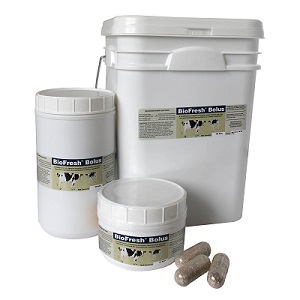What’s up with somatic cell counts?

Dr. John Doerr, Ph.D., PAS, Dpl. ACAP - Vice President, Science and Technology - Agrarian Solutions
A while back, the phrase “history repeating itself” came to mind as I saw the planting progress stats for corn and soybeans from USDA. For the first week of June, the 67% planted rate for corn was the lowest on record. A few states were above, but some had just reached 35% in areas where the five-year averages were more like 90%. Déjà vu can sometimes be fun; but not in this situation. Sixty years of mycotoxin research has well established that for a vulnerable feedstuff, such as corn, the later the planting, the higher the risk for in-field contamination with one or more significant mycotoxins. And, if weather is again uncooperative and harvest is delayed or is rushed to avoid other problems, the quality going into silage may also be off. Then you can add the risk of post-harvest contamination to the total. That doesn’t bode well for dairymen. Don’t get me wrong; I am not making a prediction! When this article is released, many things will have changed, hopefully for the better. But history does often repeat. Being cautious from here on out is a wise stance.
Now, let me add another dimension. I was also reviewing a couple of test reports on some research diets that, by conventional testing, looked completely negative for the major toxins. But a re-test with a method quantifying more than 700 toxins in a single run found cytochalasin J, abscisic acid, alterneriolmethyether, furarinolic acid, and epiequisetin, to name just a few (do you know any of them?). What’s worse, I can’t tell you what the risks are for cattle from those, and I don’t know what their interactive (synergistic) potentials might be. But these are mycotoxins, nonetheless. And there is one thing we can say with some certainty about mycotoxins: one of the universal impacts they will have...impairment of immune function. Dairymen also know a good bit about what happens if the cow’s immunity is compromised.
Impaired immunity translates into better chances for infectious agents and opportunistic pathogens to gain a foothold. Clinical or sub-clinical disease? Who knows? But some members of the herd will tell you quickly that trouble is brewing. Poor or worsening reproductive statistics, a drop in milk production or quality, or even a surge in cows with elevated SCC and frank mastitis can all be outcomes when either low levels of ‘known’ mycotoxins or combinations of those we really don’t know much about and do not test for are in the rations. You already have information on the prevention of issues from low level or above low level mycotoxin challenges – Select BioCycle™, and Select DTX™ (or BioCycle Plus™) for those levels, respectively. And if you do notice a few too many cows hitting the higher SCC, don’t forget the rapid corrective response you can achieve with Biofresh Bolus®. By the way, Biofresh went on special during July and remains so through August. Buy 5, Get 1 Free. Stock up now! For more information, contact your Select Sires or Agrarian representative.
